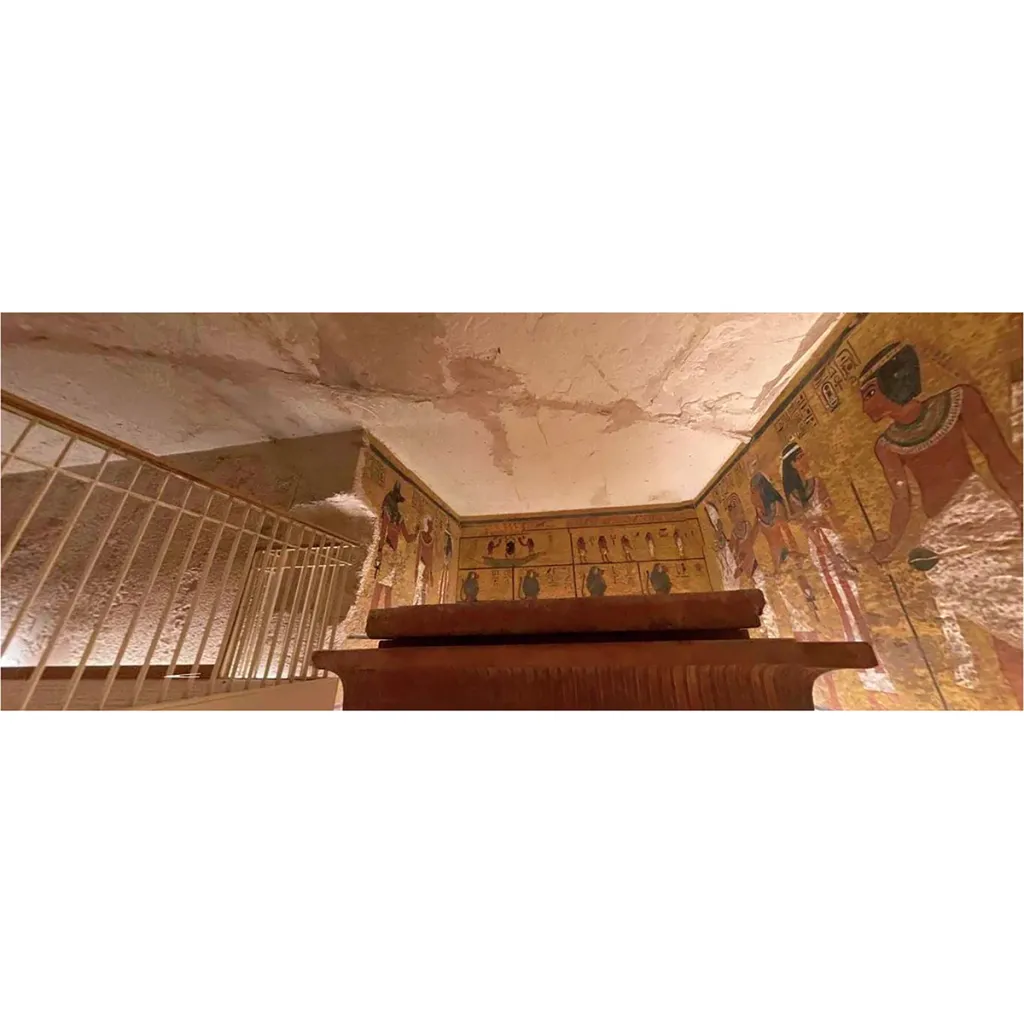The tomb of ancient Egyptian King Tutankhamen, located in the Valley of the Kings, has experienced instability and damage from flash flooding and major faults that has worsened over time. One expert outlined methods for reinforcing the underground tomb using innovative technology.
In a study, published earlier this year in the journal Nature, Sayed Hemeda, a researcher in the architectural conservation department at Cairo University, used geotechnical modeling and PLAXIS 3D software to calculate stresses and deformation patterns in the tomb.
This tomb, which includes four main chambers with an entrance ramp and stairs, sits in a low-lying position dug into the valley’s floor. This allowed for its entrance to be hidden by debris amid flooding and tomb construction, but has also made it more vulnerable to geostatic loading from overhead rocks and rock bursts. A prominent fault line, along which earthquakes can reach a magnitude 6 on the Richter scale, also runs through the tomb. Water damage from recent flash floods due to climate change has caused further damage to the tomb’s support pillars and walls, along with changing moisture levels in the nearby Esna shale.
Hemeda noted severe cracks in the antechamber and burial chamber ceilings around the main fault, which has allowed in rainwater that has already endangered the tomb’s structural integrity and murals.
The study explored the static stability, safety margins, and engineering failures of the tomb, while considering the aforementioned adverse environmental factors, in three phases.
The first included a comprehensive examination of the Esna shale using experimental compression tests and Rocklab software to better understand the strength and deformation modulus. The second involved an evaluation of the tomb’s stability focused on the geostatic loads, as well as the impacts of the flooding and fault line in a 3D model using the 3D PLAXIS code. The third combined the geotechnical modeling of the tomb’s surroundings in advanced programs like PLAXIS 3D.
The shale samples were found to be brittle with fluctuations in moisture lessening its strength. Rock failure in the antechamber and burial chamber’s ceilings is due to the overburden and swelling pressure released from shale, particularly during flash floods.
Findings from the 3D static analysis indicated that the ceilings of the antechamber and burial chamber are in high vertical compressive stresses and the bottoms of the ceilings are under high tensile stresses.
The results of the numerical analysis using the 3D PLAXIS program reflected these findings, but also indicated that the tomb is relatively stable in dry conditions. “The structural failure of the ceilings may be more affected by the large fault as well as the groups of joints than the vertical levels of the tomb,” the study explains.
Ultimately, it suggests “reducing moisture fluctuations” throughout the tomb to further stabilize the structure and reduce further deterioration “which can be achieved by limiting air circulation inside and around the tomb.” It also recommends “a well-focused strengthening and retrofitting program” to address further concerns.
Research from this study can be applied to help with preservation efforts at other notable sites suffering from similar or related issues.
